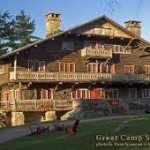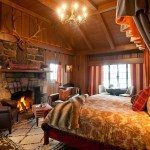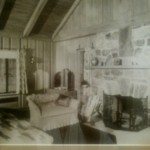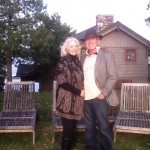Repurposing wealth for the preservation of natures most incredible gifts. An environmental habitat shared in perpetuity and the opportunity to connect with nature.
The Point offers this and much more.
The Point in upper lake Saranac is a Relais & Chateaux
Understated elegance. The Point rekindles the lifestyles of America’s rich and powerful. Experience the grandeur, luxury and ultimate privacy in a setting that was once summer home to the Rockefellers. One of the greatest Adirondack camps is now a Relais & Chateaux.
William Avery Rockefeller commissioned William Destin to design Camp Wonundra
We’re talking about the lavish rustic compounds called ” the great camps” in the Adirondacks which use to belong to 19th century robber barons…their history reveals the desire for seclusion but it provoked intriguing secrecy.
Forever magnificent and wild, the six- million- acre Adirondack Park was established by the New York State legislature in the last two decades of the 19th century to preserve the magnificent wilderness of mountains, forest, and lakes. But for preservation sake the true resources are the families whose money not only preserved vast amounts of privately owned land but their wealth bought them something others could never afford, seclusion and anonymity.
Saranac Lake was founded by Dr. Trudeau (the cartoonist Gary’s great grandfather) as a wilderness cure for tuberculosis. It is still a medical research center and charming 19th century town.
In the late 19th century plutocrats such as J.P. Morgan and Alfred Vanderbilt commissioned architect William West Durant to construct rustic lakeside estates which would incorporate vast amounts of land, multiple building sites, with the caveat that their private domains be tucked so far away from view and deep into the woods. Farther away from the call of humanity and closer to the sound of the loons which made these perfect handcrafted domiciles perfect for camp life.
Camp Pine Knot can be said to be the progenitor of the rustic Adirondack style
As an example, Marjorie Merriweather Post’s Topridge, described as a consortium of self-contained little villages, as many as 68 buildings, each with a different function: sleeping, dining, bowling, billiards, squash.
- Marjorie Merriweather Post
The buildings were made from materials at hand-the fireplaces from fieldstone found on the property; the walls, rafters, posts and columns and stairs and staircases from the trunks of local red spruce, hemlock, yellow birch, white cedar, or white pine; the doors, gables and railings trimmed with branches, roots, and burls, the more gnarled and twisted the better-in what is variously-called wigwork, polework, or stickwork. Birch and cedar bark sheathe the interior and exterior walls, the ceilings, and gable ends. Even the chairs, beds, tables, and cupboards are fashioned from minimally worked native wood.
Marjorie with executives of General Foods
Marjorie was the daughter of C.W. Post. One can’t even begin to imagine the wealth accrued from owning one of America’s most industrious companies- General Foods. Considered by Post to be a “rustic retreat,” the camp was spread amongst 207 acres and situated on an esker between the Spectacle Ponds and Upper St. Regis Lake. As originally built, the property could only be reached by water. Guests would arrive by float-plane or Post’s yacht at a private dock and then be transported via a funicular to the main building at the top of the ridge.
Every cabin was staffed with a private butler including a fully staffed main lodge. Guests would be greeted with Gin-and-tonic in hand and at least three times a week they would gather in the 65-by-50 foot living room where full-length movies would be screened. And on many occasions the actors themselves would be present.
“Damn the woods, we’ve conquered nature.” Michael Wilson
Architect James Chuda on a trail along Upper Saranac Lake.” Experiencing one with nature- awakens one to the inner beauty and wellness within all of us.”
Dr. Michael Wilson is a road scholar who hosts educational tours in the Adirondacks. He’s coined the term “the illusion of roughing it.”
“Historically and culturally we cherish and destroy nature at once. We create the myth of the garden and yet consume it to sustain our style of life.”
One could only imagine what provoked what some refer to as an age of “Victorian ecological imperialism.” Michael Wilson, a well known historian of the great camps gave examples, ” Pine Knot and Uncas were the first attempts to create picturesque aesthetic, a rusticity with all the comforts.”
An elegant wilderness
Today the Upper Saranac which has 34 miles of shoreline supports over 500 original camps, 40 percent are owned by the state and “forever wild.”
Every great camp built created an opportunity for others to out camp or top the next one. To the wives of great wealth and inheritance, seclusion brought fear-the fear of losing ones wealth. Not only were the social scenes elaborate but the underpinnings of marital dismay would lead to multiple marriages in which even more wealth was acquired or as some would assume, secured. Vanderbilt had bought another great camp, Sagamore, a gigantic chalet which he had hoped to use as a honeymoon cottage for his wife Elsie French, but she caught him having an affair in his private railroad car. He then secured an heiress, Margaret Emerson, whose father had invented Bromo-Seltzer but soon after, Alfred went down on the Lusitania on May 7, 1915. His widow would again marry two more times and afford even more luxury and social status than the four-times-married Marjorie Post did at Topridge.
Margaret Emerson

Alfred G. Vanderbilt

It was all about their guests, Hollywoods most famous celebrities, newsworthy headliners, sitting ducks, sequestered in wooden citadels and later pulp on page in the bare-root Adirondack columns.
Gene Tierney was a frequent guest at Camp Sagamore as was Eddy Duchin
A personal experience

In 1973 I was invited to visit one of the most famous Adirondack camps. Camp Wonundra was commissioned in the late 1930’s by William Avery Rockefeller from William Distin, the top second generation camp architect. My friend, who will remain anonymous, is a Rockefeller. He suggested we jettison to his families compound in Upper Saranac Lake. At the time, I had no idea where I was going or what I would discover.
The camp was located on an inlet surrounded by forests of trees. The lodge or main building consisted of mason stone and wood. Massive log beams supported an a frame ceiling. Light spilled in from all the windows as we carefully removed large panels of cotton cloth meant to preserve well appointed furnishing and upholstery.
It was very rustic. In fact, if rustic meant naturally derived one could describe the interiors as sparse, minimal and without a sign of human life. Juxtaposed the viewable insignificance of this wooden logged cabin structure existed a primal calling for something wild, untouched, and unfettered by mans nature to own and dominate.
To their credit, over the last century, five generations of Rockefellers have used the family wealth to reshape the American horizon, creating a magnificent panorama of open spaces and more than 20 national parks from the rocky coast of Maine to the icecapped mountains of Wyoming.
As part of the yearlong celebration of its 100th anniversary, in 2005, the National Audubon Society, one of the nation’s largest and oldest conservation organizations, honored the family for a record of conservation that matches the society’s century-long existence.
Rockefeller Archive Center- From left, Winthrop, John D. III, David and Laurance Rockefeller as children, on a road at the family estate.
The award came with a price. Mr. Flicker said he was mindful that the family derived its enormous wealth from the exploitation of a nonrenewable natural resource, oil, and that the pursuit of oil over the last century had done enormous environmental damage. But he said that what was more important was that for the last century the family had used its wealth for public good.
My first experience in the Adirondacks would later unfold as a wonderful new discovery. Forty years later I returned with my husband James to experience the nine-building compound, once known as Camp Wonundra, but today operates as a Relais & Chateau resort known as The Point.
Our discovery of camp life at The Point brought the feeling of being warmly welcomed by a staff so eager to assist, provide, prevail and excel and their efforts brought new meaning to the words, hospitality and service.
Imagine if you were a Rockefeller visiting your summer camp. We had the great experience of living and dining in the very room William and his wife spent most of their time.


Our experience at The Point was truly unique. A rendezvous with nature which we will always treasure. We resided in the Mohawk Suite, covered in down, pillows and comforters, we slept soundly under the light of the moon having been serenaded by the echoing sounds of the loons on the lake.

Join us for part two of my series on The Point: Reliving a Great Camp in the Adirondacks its Magic and History as we explore its extraordinary luxuriance. Truly a once in a lifetime experience. Learn some amazing culinary tips from The Point’s incredible chefs, cruise along the shores of the Upper Saranac Lake in a fabulous one-of-a-kind, 1928 Hypercraft cruiser, and enjoy all the natural wonders comforts of this beautiful resort.
Editor’s Notes:
A special thank you to Jacob Kipping the Assistant General Manager of The Point
Contact The Point-800-255-3530-email-point@relaischateaux.com













